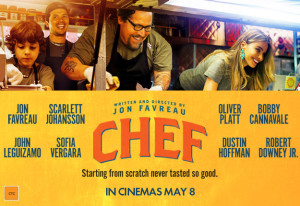

In more normal times a Presidential Award would be an impressive credential – pure and simple.
Yet when the speaker’s introduction specified his award came from “President Barack Obama,” the man in the row ahead folded his arms and angrily said: “He just lost me!” Had the introduction read: “President Donald Trump” it seems safe to suggest that someone else’s arms would have folded and a similar comment made.
Late night comics can get political. They will lose some, but gain others. Business speakers don’t have that luxury.
Unless your presentation is directly related to politics, the best rule for now is: Don’t go near what has become The Third Rail of Business Presenting.
Up your speaking game at The Speaking Intensive℠. Get 18 hours of coaching with us in a small group setting for half the cost of our private coaching retainer. Register for the April 27-28 small group coaching session to join us before the last few seats are sold out!

Knowing how and when to hit the reset button is an often over-looked skill that is critical to the craft of public speaking.
Have you ever sat in an audience where the speaker wasn’t connecting – not because the content was off, but because the speaker’s energy level was out of sync with the audience’s?
We were – last week. It was a magic show complete with lighting, levitation, and illusions. The magician was a larger than life performer, with tone, gestures, and pacing identical to the show he does in Las Vegas. The performance should have been a home run, but it wasn’t.
The issue? The show wasn’t in Vegas. It was at a retirement community we were visiting where an 8:00 PM show start time is considered “a little late”. The audience, full from its’ pre-show dinner, was stone cold sober in all senses of the word. Yet, the magician played with Vegas-like energy. He couldn’t dial it down to meet the audience, establish connection, and lift them up. It was an epic fail because he couldn’t hit the reset button.
If this happened to you, could you press the reset button?
In our speaker coaching programs, we train presenters to rehearse solutions to disaster scenarios.
Two options for hitting the reset button for you to practice:
Scenario 1: There’s a delta between your energy and the audience’s:
Pause, look at the audience, and shift your tone so it’s just above their’s. Then bring them up as quickly as they can accept.
Scenario 2: The content you’re presenting isn’t resonating:
Notice you’re out of sync and change it up. Shift your body position, darken the PowerPoint, pause for a beat and say something like “you know, let’s just talk.” Then relax and have a conversation.
The single most important thing to remember:
Pay attention to the audience’s tone level and adjust yours as needed.
Be observant. If there’s a sudden coughing outbreak spreading throughout the room, extra light from cell phone screens, or people sneaking out of the room, hit the reset button to re-engage your audience and re-track your presentation.
Learn how to hit your reset button at The Speaking Intensive℠. Get 18 hours of coaching with us in a small group setting for half the cost of our private coaching retainer. Register for the April 27-28 small group coaching session to join us. Save money by taking advantage of the early registration discount before it ends on March 3rd, if the session isn’t sold out by then.

Google “How to Present to Multi-Generations” and you’ll see a results list containing loads of information on managing, engaging and motivating. In financial services and other industries, mastering the challenge of successfully presenting ideas, concepts and data in a relatable way to online slots generations different from our own is paramount to professional and financial growth.
“Navigating the Intergenerational Workforce” by Robert Dilenschneider got us thinking about conversations we’ve had with financial advisors and wholesalers during our speaker development programs.
While he makes many strong points, we have a little different take when it comes to how to present successfully to multi-generations. Our entry-point:
Learn about their humor.
Ask people in other generations to tell you jokes and funny stories they would only tell each other. The ones only they understand. You may not understand. Ask them to explain it to you. That explanation will likely give you insights into their lives, attitudes, and points of view.
Examples:
Younger presenting to older:
”You know you’re getting old when you stoop to tie your shoelaces and wonder if there’s anything else you can do while you’re down there.”
You don’t have to think it was funny when George Burns said this, but you have to know why it‘s funny. This quip humorously describes the beginning of the aging process … a valuable entry point into that generation’s basis of thought.
Older presenting to younger:
- “I’m Morrisette depressed not Van Gogh depressed.”
- “You give me one leather jacket, I invest it, then give you back TWO leather jackets!” – Fonzi Scheme
You don’t have to think these lines from 22-year-old comedienne Shelby Fero are funny but you ought to know why.
If you don’t know what makes someone laugh, you don’t fully understand their thinking, feelings, or cultural context.
From baby boomer through Generations X and Y to Millenials, understanding generational humor will go a long way to helping you present successfully to multi-generations. Humor is your way in.
Did you find this helpful? Learn more techniques for crafting and delivering presentations that move audiences to action at The Speaking Intensive℠. You’ll get 18 hours of coaching with us in a small group setting for half the cost of our private coaching retainer. It’s a no-brainer! Register for a group session below.
Already graduated from The Speaking Intensive℠ and want to participate again? The repeater record stands at 4 times! Call or email us for your special repeater rate.

Have you seen the movie The Chef? Fandango describes it: “An out-of-work L.A. chef who opens a food truck in a bid to realize his culinary potential …” While this is an accurate description, we saw more.
In the movie, an established restaurant is going to be reviewed by a renowned food blogger. The chef knew the current menu was downright dowdy – better suited to the country club set than today’s foodies. So he created a gastronomic wonder of a menu – one that would amaze and delight both blogger and customers.
Then the owner stepped in: “We are being reviewed by the most important critic in the city. Now suddenly you are going to be an artist. Be an artist on your own time! Cook my menu!”
The chef knew better, but grudgingly cooked as commanded. As you can imagine, the food blogger crucified courses and chef – setting the movie off on an interesting direction.
Moving to real life, ever have this happen?
You have a great idea – creative, effective and targeted at current audiences. This one is the one. You feel it in your bones and see it in your colleagues. It’s exactly what people want to hear right now.
But senior management insists you stick with the tried and true. “This presentation has helped us grow for the past 5 years. We are not changing it now, when the stakes are high.”
So you do it the boss’s way … and it’s an epic fail.
Whose fault was it?
The boss’? Sure.
Compliance? Well … you know compliance!
Where do you land in the blame game?
What might you have done to create or at least compound the failure? Did you deliver that stock presentation with the same passion as you would have your new idea? What could you have done differently?
There are the high risk approaches – good ideas that might have you looking for a new job:
- Move forward with your new idea and hope it is so successful that management will forgive your transgression as they focus on the result.
- Slip in some of the new material without being too obvious.
- Shut off the LCD projector and tell your compelling story.
Here’s a no risk approach: SHIFT SUBTEXT.
Move the subtext from something about which you are passionate under your words.
What is subtext? Text is the words. Subtext is everything else: how you say it, how it looks, and how it feels. In a movie, subtext is the action, the music, the visuals. In life, it’s the emotions and feelings that drive the way you deliver the text.
The trick is to replace the subtext you feel about the stock presentation with subtext from somewhere else. It may come from your feelings about family, a favorite sports team or the idea the bosses squelched. Shift the enthusiasm you have for that under the text of that past it’s prime presentation.
Go ahead … test drive it. Deliver Lincoln’s Gettysburg Address with all of the fervor, tenacity and zeal displayed when watching your favorite team in the World Cup of Anything. I’m serious. Find an empty room, close the door and do it. Full volume. Feels oddly strange and fun at the same time, right?
Now dial it back a notch or two and deliver your boss’ presentation. It may feel a bit “big” but it’s better, isn’t it?
As we write this blog post, Lisa and I are preparing for next week’s Speaking Intensive. Thankfully, we don’t have someone looming over us saying: “The program works the way it is. Always. Every single time. Why change it?”
Why indeed. Don’t worry. We aren’t re-making the entire “menu” but we are spicing up a recipe or two.
Join us at The Speaking Intensive. Presenters from The Chicago Bulls, Merrill Lynch, Rockwell Collins and 40 other firms already have. Now it’s your turn. May sold out. Just 1 seat left in the July session. Catch the early registration discount for September!
© Copyright 2014 The Parisse Group, Inc.

|
Hall of Fame speaker Alan Parisse has been coaching presenters and delivering keynotes for over 25 years. Named “One of the Top 21 Speakers for the 21st Century” by Successful Meetings Magazine, he is a keynote speaker for a wide variety of industries and organizations. Alan is a passionate presentation coach to executives, financial advisors, sports stars and sales presenters. |

|
Lisa Casden has been coaching presenters for 10 years. A former professional figure skater, coach and choreographer, Lisa leverages her unique background and point of view to help speakers organize their physicality in ways that best support their message. |

This 4th of July weekend take a few minutes to watch a balloon twister at work. You know, those street performers who expand, twist and tie balloons turning them into some pretty impressive sculptures.
Why would a business presenter want to watch a street artist twist balloons? Because the best of them have a lot to teach us about grabbing, keeping and inspiring audiences.
LESSON #1: START STRONG
Here in Boulder, CO, we see balloon twisters almost every weekend. Most people marvel at the sculptures they create but we are even more impressed by the crowds they capture and delight. These artists attract their audiences as they walk by distracted – texting, talking, window shopping and chasing after kids.
In a sense, business and professional audiences are walking by, too. They are not seated waiting patiently for the speaker to get to the point. Instead they are multi-tasking in their head and on their personal technology.
So take a clue from balloon twisters: start with strength.
Balloon twisters begin with a “bang”. Not that they pop the balloon, but they start hard and fast to get people’s attention. They take a breath and push that air forcefully and confidently into the balloon.
They begin with a big move and so should you. Use your opening words to get the audience’s attention and to set the tone for the rest of the presentation. Starting off with the standard “Thank you for taking the time to hear what I have to say today. It is great to be here in your wonderful city” will likely result in repointing the audience back to their smart phones or worse … the door.
Instead, do what balloon twisters do: attract attention and get the audience interested by creating a curiosity gap: “What are they going to create with those balloons?”
Presenters: create a gap between what the audience already knows – or think they know – and what you are going to tell them.
Here’s one option: open with a question. Start out with “Do you know what you should do?” and watch as the audience mentally – and sometimes verbally – responds with “What?” or “About what?”
Answer with the main point of your speech and you’re on your way. You will have demonstrated without words that, just like balloon twisters, you are competently in control of the subject matter and yourself.
LESSON #2: CREATE A SOUND STRUCTURE
Once balloon twisters create their curiosity gap, they gradually build suspense, intensity and drama as they shape their sculpture one step at a time – tying off each balloon as they do – completing it so everything links together.
When they get a sense that the audience is drifting, twisters do something quick and unexpected to get them back. One we saw even burst a balloon and joked about it.
LESSON #3: TIE A KNOT AT THE CLOSE
All of the balloon twister’s efforts lead to a dramatic close – a work of art – and a memory people can take away.
Just like they do, you want to build to a dramatic close where the audience can leave being or doing something differently.
Fizzle out at the end and you’ll let some or all of the air out of the balloon. Try to do too much with an over the top close and you’ll burst the balloon leaving the audience with nothing to take away.
Don’t let the air out at the end. Position your audience to walk away with a stunning multi-colored balloon sculpture.
Summing up from the business presenter lens:
- Grab attention and create a curiosity gap.
- Gradually build intensity, suspense and drama.
- Pay attention to the audience and get them back if they drift away.
- As you make different points, tie them down securely.
- Lead toward a compelling close the audience can take away.
Do you build your talks that way?
Join us at The Speaking Intensive. Presenters from The Chicago Bulls, Merrill Lynch, Rockwell Collins and 40 other firms already have. Now it’s your turn. May sold out. Just 2 seats left in the July session. Catch the early registration discount for the September session!
© Copyright 2014 The Parisse Group, Inc.

|
Hall of Fame speaker Alan Parisse has been coaching presenters and delivering keynotes for over 25 years. Named “One of the Top 21 Speakers for the 21st Century” by Successful Meetings Magazine, he is a keynote speaker for a wide variety of industries and organizations. Alan is a passionate presentation coach to executives, financial advisors, sports stars and sales presenters. |

|
Lisa Casden has been coaching presenters for 10 years. A former professional figure skater, coach and choreographer, Lisa leverages her unique background and point of view to help speakers organize their physicality in ways that best support their message. |








